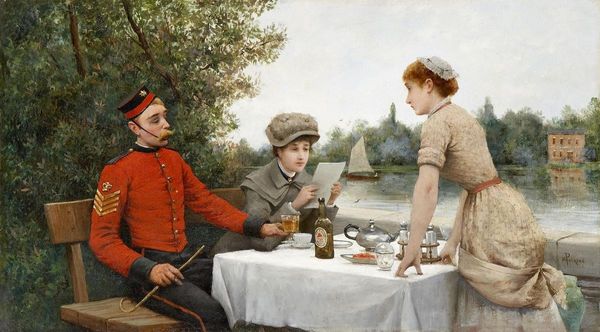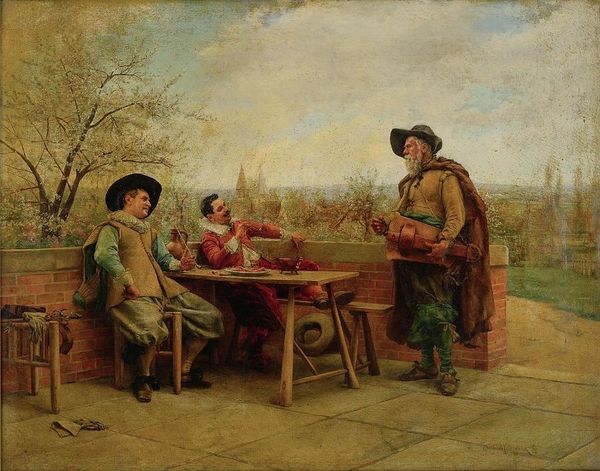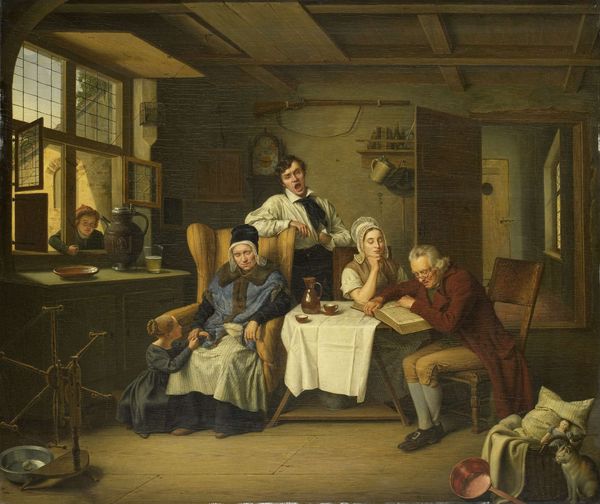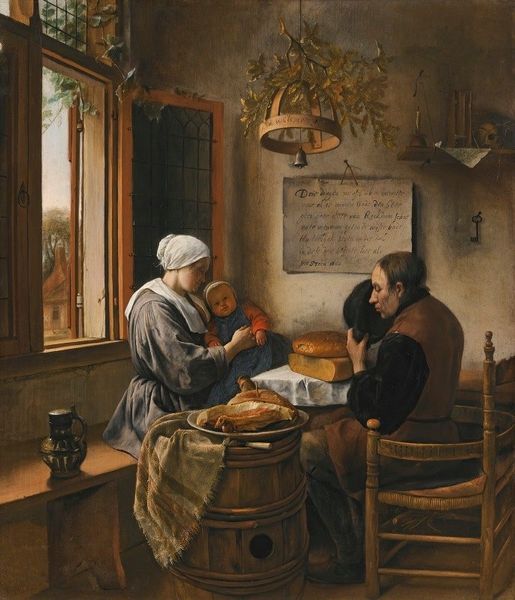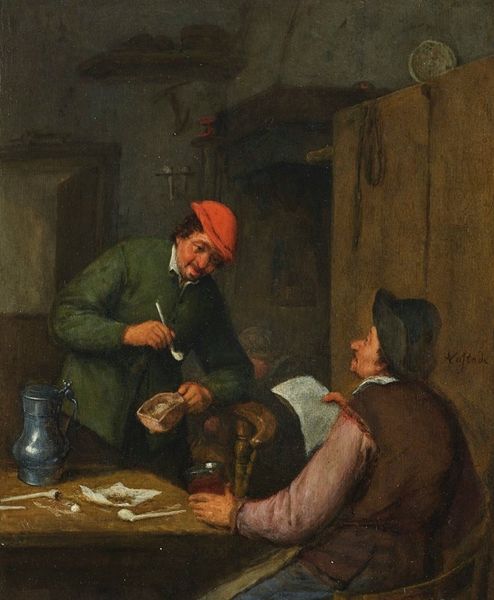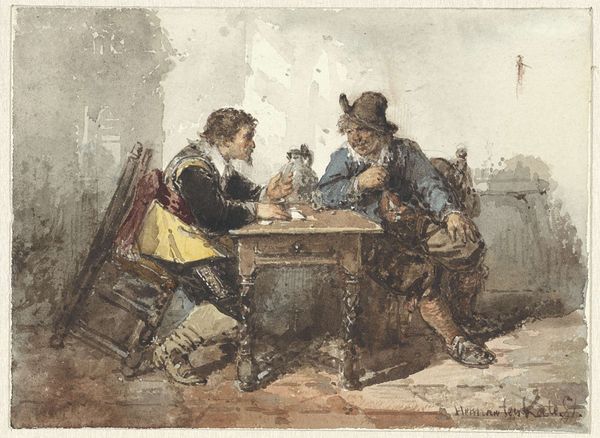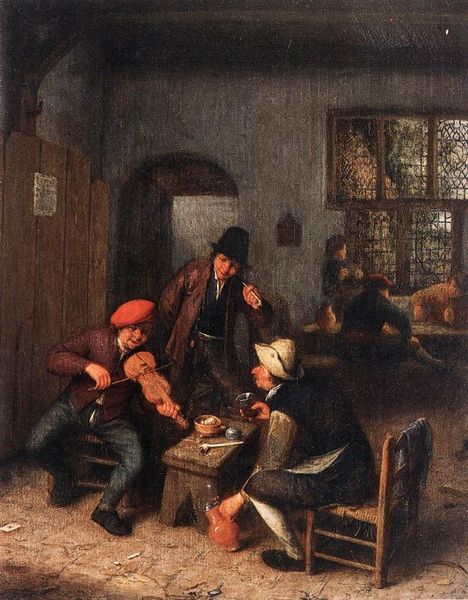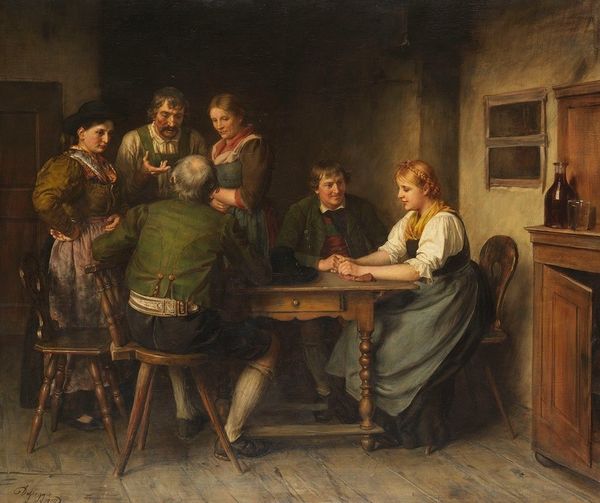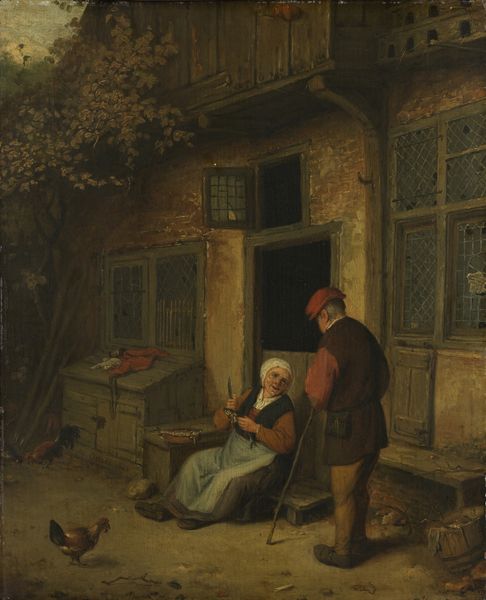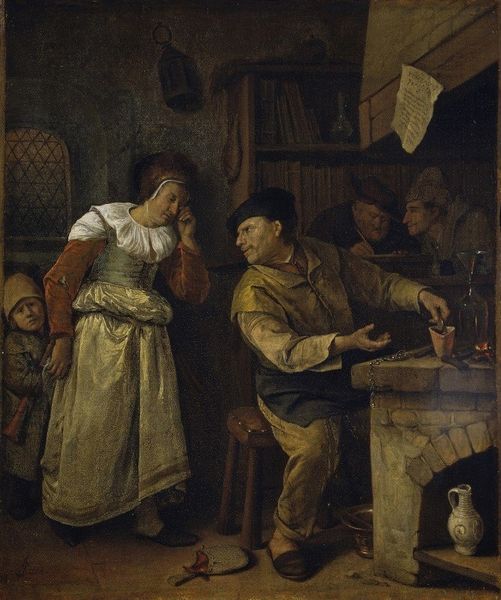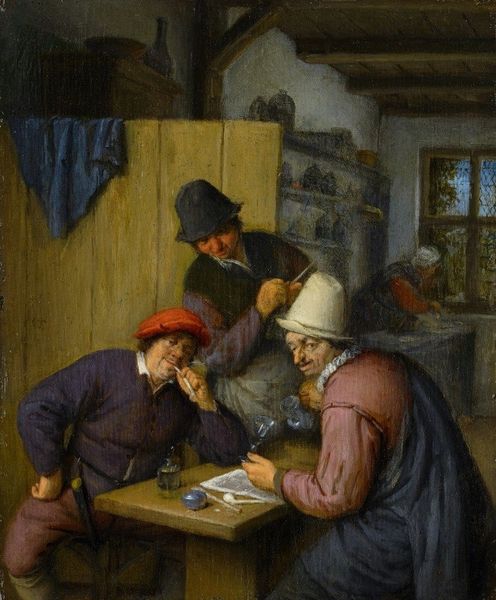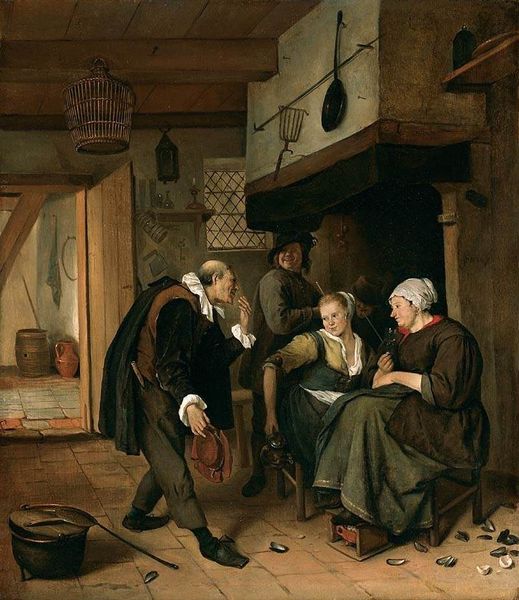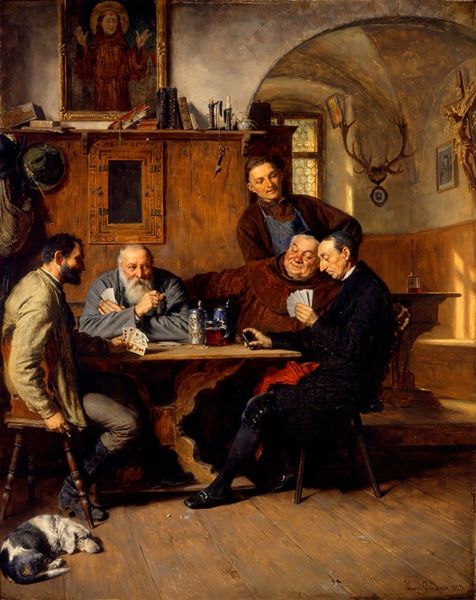
Copyright: Public domain
Editor: This is "The Card Players," an oil painting by Ernest Meissonier from 1872. It strikes me as a very formal, almost theatrical scene, despite depicting what seems like a casual card game. What's your interpretation of it? Curator: Well, beyond its aesthetic appeal, consider the historical context. Meissonier painted this shortly after the Franco-Prussian War. What commentary might this seemingly simple genre scene offer about masculinity and social class amidst national trauma and defeat? Notice the meticulous detail—typical of academic art, yet potentially revealing of an anxious desire to control or order the world. Do you see that here? Editor: I see the detail, definitely. But control? It looks more like escapism. Maybe a retreat into leisure to forget the war, instead of ordering the world. Curator: Exactly! And who gets to escape? Are these men aristocrats? Consider their clothing, their postures. Are they meant to represent a class that can distance itself from broader societal anxieties? Their game perhaps becomes a microcosm of power dynamics at play in the larger world, where some win and some lose. The presence of a subordinate and possibly subjugated servant adds layers to the social hierarchy. Editor: I hadn’t considered that aspect so closely before, I just saw a historical scene. Seeing it as a critique of class makes it a lot more thought-provoking. Curator: Indeed, this seemingly innocent card game is charged with meaning. It prompts us to question whose stories are told, whose are erased, and how art can subtly reflect or challenge existing power structures. By interrogating visual culture, we uncover suppressed narratives. Editor: It makes me want to know more about the historical period and who exactly these men represent. Thank you for making me rethink the work with those lenses! Curator: My pleasure. Keep questioning, keep exploring those power dynamics. Art becomes a powerful tool when used to expose inequalities and inspire change.
Comments
No comments
Be the first to comment and join the conversation on the ultimate creative platform.
